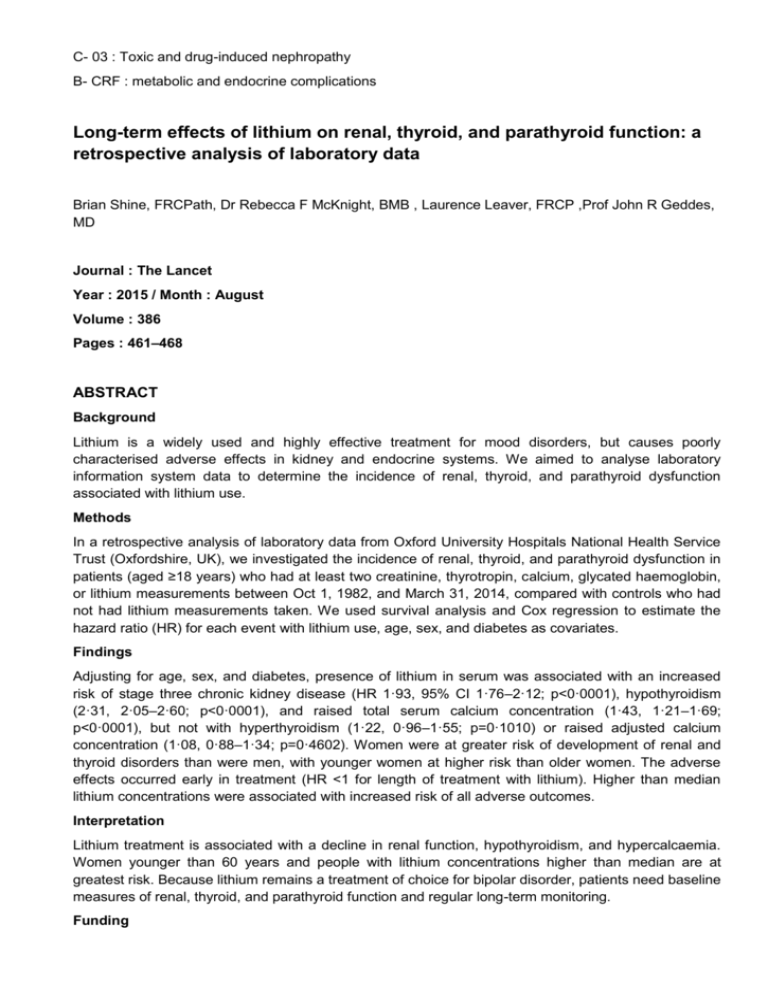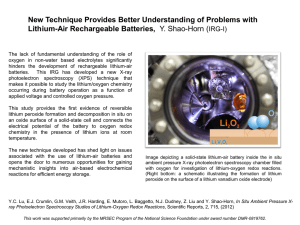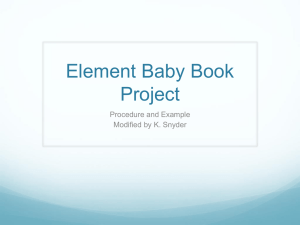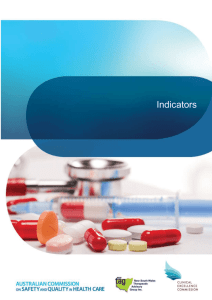DOCX ENG
advertisement

C- 03 : Toxic and drug-induced nephropathy B- CRF : metabolic and endocrine complications Long-term effects of lithium on renal, thyroid, and parathyroid function: a retrospective analysis of laboratory data Brian Shine, FRCPath, Dr Rebecca F McKnight, BMB , Laurence Leaver, FRCP ,Prof John R Geddes, MD Journal : The Lancet Year : 2015 / Month : August Volume : 386 Pages : 461–468 ABSTRACT Background Lithium is a widely used and highly effective treatment for mood disorders, but causes poorly characterised adverse effects in kidney and endocrine systems. We aimed to analyse laboratory information system data to determine the incidence of renal, thyroid, and parathyroid dysfunction associated with lithium use. Methods In a retrospective analysis of laboratory data from Oxford University Hospitals National Health Service Trust (Oxfordshire, UK), we investigated the incidence of renal, thyroid, and parathyroid dysfunction in patients (aged ≥18 years) who had at least two creatinine, thyrotropin, calcium, glycated haemoglobin, or lithium measurements between Oct 1, 1982, and March 31, 2014, compared with controls who had not had lithium measurements taken. We used survival analysis and Cox regression to estimate the hazard ratio (HR) for each event with lithium use, age, sex, and diabetes as covariates. Findings Adjusting for age, sex, and diabetes, presence of lithium in serum was associated with an increased risk of stage three chronic kidney disease (HR 1·93, 95% CI 1·76–2·12; p<0·0001), hypothyroidism (2·31, 2·05–2·60; p<0·0001), and raised total serum calcium concentration (1·43, 1·21–1·69; p<0·0001), but not with hyperthyroidism (1·22, 0·96–1·55; p=0·1010) or raised adjusted calcium concentration (1·08, 0·88–1·34; p=0·4602). Women were at greater risk of development of renal and thyroid disorders than were men, with younger women at higher risk than older women. The adverse effects occurred early in treatment (HR <1 for length of treatment with lithium). Higher than median lithium concentrations were associated with increased risk of all adverse outcomes. Interpretation Lithium treatment is associated with a decline in renal function, hypothyroidism, and hypercalcaemia. Women younger than 60 years and people with lithium concentrations higher than median are at greatest risk. Because lithium remains a treatment of choice for bipolar disorder, patients need baseline measures of renal, thyroid, and parathyroid function and regular long-term monitoring. Funding None. COMMENTS In this study, lithium use was associated with increased risks of stage 3 chronic kidney disease (HR 1.93, 95% CI 1.76–2.12), hypothyroidism (HR 2.31, 95% CI 2.05–2.60), and hypercalcaemia (HR 1.43, 95% CI 1.21–1.69). Women had a higher risk of renal and thyroid disorders than did men, with younger women at higher risk than older women. Lithium is a widely used and effective treatment for mood disorders, protecting against both depression and mania and reducing risk of suicide. However, a narrow therapeutic index, which necessitates routine monitoring of serum concentrations, is one of the clinical disadvantages of lithium in practice. Lithium can also adversely affect the kidneys, thyroid, and parathyroid glands, so regular monitoring of renal and endocrine function is recommended. Lithium causes three types of renal impairment: acute toxic effects, nephrogenic diabetes insipidus, and chronic renal dysfunction. For this retrospective analysis, they used the Oxford Laboratory System. The laboratory information contained data for 4678 patients who had serum lithium concentrations measured once (2795 [60%] of whom had more than one measurement) and 689 228 controls. After adjustment for age (cut-off 60 years), sex, and evidence of diabetes, presence of lithium was significantly associated with stage three chronic kidney disease, hypothyroidism, and high total calcium concentration, but not with development of hyperthyroidism or high adjusted calcium concentration. The results suggest that presence of lithium in serum is strongly associated with a decline in renal function and hypothyroidism, and less strongly with high total calcium concentrations. The pathophysiology of lithium-induced renal failure is unclear but seems to be of a chronic tubulointerstitial nephropathy with lesions suggestive of focal segmental glomerulosclerosis.18 Renal cysts, which occur from the distal tubule and collecting ducts, might occur and can be visualised by MRI. Lithium-induced diabetes insipidus has been treated with the sodium channel blocker amiloride, with reasonable results. Preclinical results23 from rodents have also suggested that lithium-induced renal fibrosis might be reduced by treatment with amiloride. To conclude, these findings suggest that close monitoring of adverse effects in all patients taking lithium is essential and that clinicians should work hard to use the lowest effective dose of lithium. This study is the first to suggest some patient factors (sex, age) that might affect susceptibility to lithium nephrotoxicity. Pr. Jacques CHANARD Professor of Nephrology







